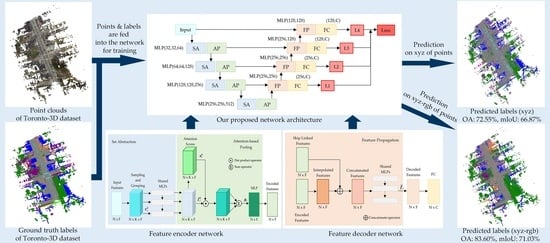Semantic Segmentation of Large-Scale Outdoor Point Clouds by Encoder–Decoder Shared MLPs with Multiple Losses
Abstract
Share and Cite
Rim, B.; Lee, A.; Hong, M. Semantic Segmentation of Large-Scale Outdoor Point Clouds by Encoder–Decoder Shared MLPs with Multiple Losses. Remote Sens. 2021, 13, 3121. https://doi.org/10.3390/rs13163121
Rim B, Lee A, Hong M. Semantic Segmentation of Large-Scale Outdoor Point Clouds by Encoder–Decoder Shared MLPs with Multiple Losses. Remote Sensing. 2021; 13(16):3121. https://doi.org/10.3390/rs13163121
Chicago/Turabian StyleRim, Beanbonyka, Ahyoung Lee, and Min Hong. 2021. "Semantic Segmentation of Large-Scale Outdoor Point Clouds by Encoder–Decoder Shared MLPs with Multiple Losses" Remote Sensing 13, no. 16: 3121. https://doi.org/10.3390/rs13163121
APA StyleRim, B., Lee, A., & Hong, M. (2021). Semantic Segmentation of Large-Scale Outdoor Point Clouds by Encoder–Decoder Shared MLPs with Multiple Losses. Remote Sensing, 13(16), 3121. https://doi.org/10.3390/rs13163121







